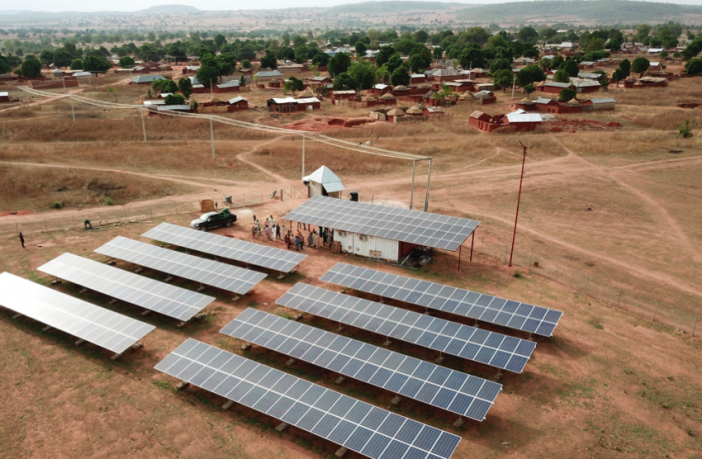- Launched last week at the United Nations Climate Conference COP27, the Africa Minigrids Program (AMP) is a country-led technical assistance program that supports countries to rapidly and cost-effectively provide electricity and new development opportunities to some of Africa’s poorest communities.
With funding led by the Global Environment Facility (GEF), and implemented by UNDP in partnership with national governments, RMI (founded as Rocky Mountain Institute) and the African Development Bank (AfDB), the AMP’s market transformation approach aims to help countries crowd in private investment to scale up and accelerate the deployment of renewable energy minigrids.
Minigrids are stand-alone electricity networks that are typically not connected to the national electricity grid. Solar-battery minigrids hold great potential to boost electricity access in the AMP’s 21 countries – powering households, key social services such as health centers and schools, and businesses, driving economic growth. UNDP modelling estimates that minigrids will be the lowest-cost approach to bring electricity to 265 million people in these countries by the year 2030. US$65 billion in new investments, primarily from the private sector, would be needed to realize the minigrid opportunity in such countries. This is estimated to equate to the construction of 110,000 minigrids, bringing electricity to more than 200,000 schools and clinics, and more than 900,000 businesses.
With a focus on various cost-reduction levers, AMP aims to support scale-up investment by improving the financial viability of minigrids. The program will work with countries to put in place the policies and regulations that enable large-scale private investment, durably creating the conditions for renewable energy minigrids to be deployed at scale.
Access to energy is a precondition to socio-economic development. Yet half of the people living in sub-Saharan Africa – 568 million people – don’t have access to electricity, effectively locking some of the world’s most vulnerable communities in poverty. The AMP aims to bring the development benefits of energy access to a wide array of communities across the continent by focusing on supporting productive uses of energy, which supports socio-economic development by enhancing the quality of sectors that require energy input such as agriculture, healthcare, education, and small businesses.
The AMP aims to complement activities supporting minigrid investment in Africa, and has therefore identified three key areas of opportunities to focus on: national dialogues to identify the best ways to deploy minigrids; productive use of energy, and digitalization for minigrids.
The 21 AMP countries represent a diverse set of African countries, each with their own energy market specificities and development contexts: large and smaller markets; Anglophone, Francophone, and Lusophone countries; small island developing states; and countries in post-crisis contexts.
The AMP is a key component of UNDP’s pledge to mobilize partners through its Sustainable Energy Hub to enable 500 million additional people to have access to sustainable, affordable, reliable energy by 2025. AMP’s implementation has already started with the launch of the Nigeria and Eswatini national projects in 2022 and will continue until 2027.
The participating 21 AMP countries are: Angola, Benin, Burkina Faso, Burundi, Chad, Comoros, Democratic Republic of the Congo, Djibouti, Ethiopia, Eswatini, Liberia, Madagascar, Malawi, Mali, Mauritania, Niger, Nigeria, Sao Tome e Principe, Somalia, Sudan, Zambia.
For more information Visit the AMP webpage: www.africaminigrids.org
Author: Bryan Groenendaal















